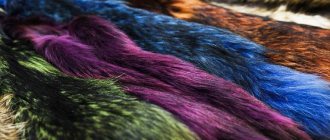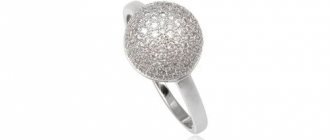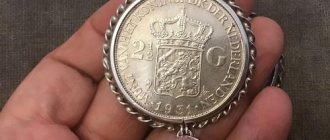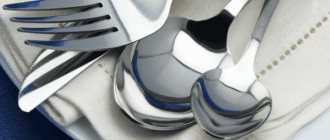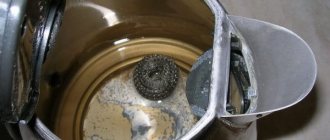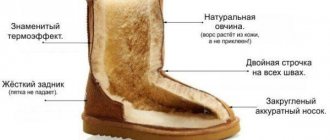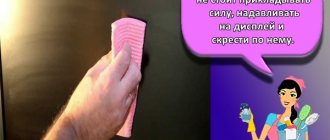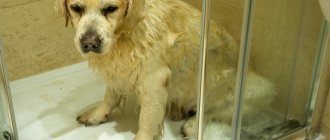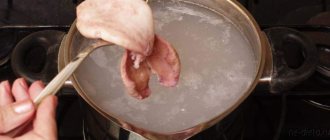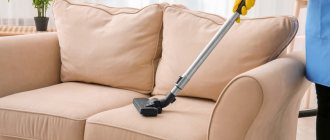Copper products have remained relevant and popular for several centuries. But their noble appearance is often spoiled by a greenish dull coating that forms on the surface layer due to an oxidative reaction with air. You can clean copper objects from oxides using modern chemical products or simple home techniques. Convenient and non-hazardous cleaning options will return your household utensils and other items to their original shine and attractiveness.
Reasons for the raid
Dishes, furniture fittings, jewelry and other things made of copper need periodic cleaning to remove green deposits. This need is associated with the characteristics of the metal. Due to prolonged exposure to air or exposure to temperature, such things become covered with a dark greenish film. Oxides are especially noticeable on dishes that are constantly used in the kitchen. Darkening can only be removed by cleaning.
Jewelry with copper behaves differently. They sometimes darken, but then return to their original state. It is widely believed that this behavior of the metal is a reflection of the health of the owner of the jewelry. In reality, such changes only reflect a reaction to environmental indicators: fluctuations in humidity, pressure or temperature.
Important! Oxides on copper cookware are especially dangerous. If plates and pots are not cleaned for a long time, the metal releases toxic substances that are harmful to human health.
Metal oxidation
Copper in its usual state has a reddish tint. If a metal is exposed to air for a long time, it acquires a red-violet or blackish tint due to a layer of oxides forming on its surface. Prolonged exposure to high humidity conditions provokes the formation of a layer of hydroxides on a copper product. Then a greenish color appears. An acetic acid layer of blue-green color also appears on the copper from contact with vinegar. It is a poisonous substance.
Why you need to clean regularly
The need for constant cleaning of copper objects arises due to the fact that a dark coating and oxide film quickly appears on the surface. Products that are heated or used in open air conditions oxidize especially quickly. Frequent use of products made of metal causes tarnishing and blackening. The external condition of jewelry made from this metal depends on external factors with which it interacts regularly.
Changes in ambient temperature, humidity and atmospheric pressure lead to the loss of the original decorative appearance.
Copper utensils, if not cleaned, begin to release harmful toxic elements. In this case, you cannot use kitchen utensils for cooking. If you cannot wash the dishes using all available methods, it is better not to use them for their intended purpose in order to avoid negative consequences.
Cleaning copper products at home
Copper products that are constantly used should be cleaned regularly. A simple rinse under the tap in dishwashing detergent is suitable. Instead, you can wipe down copper items with sanitary gel. If these methods do not bring cleanliness and a significant part of the product remains covered with plaque, more aggressive cleaning methods are used.
Vinegar with salt
In this case, rub the item with a soft cloth using a special product. It is mixed from 1 cup of ordinary vinegar and 1 tbsp. l. salt. After cleaning objects from oxide, they are washed with clean water and wiped thoroughly.
Another method for cleaning copper at home is to boil the item in a solution of salt and vinegar. For it, add 1 glass of ordinary vinegar and 1 tbsp to 3 glasses of water. l. table salt. The copper product is placed in the prepared solution and left to heat up. After 15 minutes of boiling, it is possible to remove all the green deposits. Then the item is taken out and washed under running water with detergent.
Important! This cleaning method is used for copper items with or without a protective coating.
Cleaning with ketchup
This is an easy and affordable method to clean copper products from plaque. In this case, cover the surface of the copper item with the sauce and set aside for 30 minutes. Then polish the surface with a soft cloth, and wash off the remaining ketchup with warm water. This method returns the lost shine to the item. In the same way, you can clean copper utensils from patina using kefir.
Cleaning with salt and lemon
In this way, you can clean a copper basin at home or large copper products until they shine, for example, samovars and pots. Cut the lemon into two parts and sprinkle the cut area with coarse table salt. Then polish the surface of the kitchen utensils.
You can make a special paste for cleaning copper. For it, mix table salt, baking soda and flour in equal volumes, then add lemon juice to form a paste-like mass. This product is used to rub the surface layer of the object until it shines. After cleaning, the item is washed with heated water. As a result, the copper product acquires a mirror shine.
Using Baking Soda
It is convenient to use baking soda to clean copper at home in combination with lemon juice. Use the resulting liquid to wipe the surface layer of the item with a soft cloth and then rinse. Instead of lemon juice, you can clean copper with citric acid dissolved in water and soda.
Another way to use baking soda to clean copper from oxides is by boiling:
- Dilute 1 tbsp in 1 liter of water. l. soda and lower the product completely into the liquid.
- The container is set to heat up and boil for half an hour, after which the heating should be turned off.
- Then the product is washed with heated water and wiped completely.
Important! Using the proposed method, green deposits are removed from a copper product. It is also used to remove damaged varnish on copper items.
Vegetable oil
An excellent means for cleaning copper is vegetable oil. It's even better to use olive oil. This method is good because it is natural, environmentally friendly and harmless. Therefore, it is especially recommended to use it when you need to clean valuable items from oxidation.
To do this, olive oil is poured into a deep container and copper objects are placed in it. After 10 days, they are removed and cleaned with a soft brush or cloth. Then they return to their place. Such actions are repeated every 10 days for two months.
How to restore shine
Having wiped off plaque and dirt from a copper product, you need to restore the original shine to maintain decorative properties. There are several polishing options that can be easily performed at home.
Crumpled newspaper
The easiest and most effective way to restore its original shine is to polish it with regular newspaper. You need to roll up a couple of sheets of newspaper into a ball and wipe the tarnished areas with it.
Constantly using this method, you can quickly restore the condition of the products.
Vinegar dough
A dough mixed from vinegar essence and wheat flour is suitable not only for combating stains, but also for polishing. The only difference is that to polish the dough you need to add a pinch of table salt. A mixture of these components is applied to the surface of the object and left until dry. To avoid damaging the coating, it is important to ensure that the salt particles are dissolved before application.
Hydrochloric acid solution
It is recommended to use hydrochloric acid in the most extreme situations. A powerful solution that restores shine after rubbing the surface. For safety reasons, when working with the substance, you need to wear protective gloves and a mask, and open the windows in the room for ventilation.
See also
Remedies and rules for quickly washing a multicooker at home
Kerosene and chalk
A mixture of kerosene and chalk chips is applied to a soft sponge and the metal coating is wiped until a characteristic shine is formed. This processing method is suitable for cleaning and finishing products.
Using toothpaste or powder
Abrasives, including toothpaste and powder, contain ingredients that remove tarnish from metal surfaces. The composition is applied to the darkened areas and rubbed in with light force with a soft sponge. Then all that remains is to rinse the residue with heated water and wipe the coating dry.
Use of chemicals
Sulfuric acid removes darkening and green deposits from the surface layer of copper very well. It is mixed in equal proportions with water and a copper bracelet or other objects are placed in the liquid. When the seething begins, take the item out and wipe it well with a soft cloth. Then the item is laid out on a flat surface to dry. This cleaning method returns the product to its original shine.
Important! When working with sulfuric acid and other aggressive substances, put rubber gloves on your hands, and protect your respiratory organs with a respirator.
Another cleaning method is to use the drug Trilon-B. The substance is stirred in water in a ratio of 1:10. Afterwards, the copper product is lowered into the resulting liquid and observed. When the required degree of cleanliness is achieved, the item is taken out and washed with clean water.
Technology using ketchup
The method is quite extravagant, but it works. Ketchup perfectly removes oxide deposits from the surface of copper alloys. To do this, apply a small amount of ketchup to the product and wait a few minutes. Then the item is wiped with a sponge, napkin or cloth, rinsed under running water and wiped dry, after which it acquires its original appearance and shine.
Some may find this method wasteful. Not at all, any ketchup, even the cheapest, will do for cleaning, and you only need a little bit of it.
Cleaning Copper Coins
Coins made of copper and its alloys are often found in the collections of numismatists. Over time, their appearance deteriorates. A yellow film appears on coins if lead is included in the alloy. You can get rid of such a substance by immersing objects in a vessel with a solution of laundry soap. After 2-3 hours, the coins are taken out and wiped with a rag soaked in table vinegar. After such cleaning they become shiny.
You can remove blackness from copper using citric acid:
- Mix a solution of 200 ml of water and 2 tsp. citric acid.
- Soak a piece of cotton wool with the product and wipe the parts of the coin.
- After cleaning, the products are rinsed well.
Reddish deposits from coins, crosses and bracelets made of copper are removed by treating with ammonia. Things are dipped in ammonia for half an hour, and then washed in heated water.
Salt, vinegar, flour
A tablespoon of salt is stirred in a glass of vinegar. Flour is added to the prepared solution until it acquires a mushy consistency. The mixture is applied to a copper, bronze or brass product and left in this form for 20-40 minutes. Next, the paste is washed off from the object. The product is wiped dry and polished.
The effectiveness of this method can be increased if you add a little sawdust to the resulting “dough” and, before rinsing, thoroughly wipe the product directly with the paste itself.
Removing black and green plaque
To degrease the surface and remove the patina, use a mixture of turpentine, oxalic acid and ethanol. A solution is prepared from these equal volumes of funds. A rag is moistened in it and the products are wiped. Another cleaning method is to use crushed chalk and kerosene. The substances are combined to form a thick mass and used to polish objects.
When the layer is insignificant, it can be easily removed with ordinary soap. It is dissolved in water and the entire thing is dipped into the soapy solution. Then polish with a thick sponge.
A greenish and black layer on copper utensils indicates its unsuitability for cooking and preserving food. Such products must be cleaned before use.
Cleaning rust
In addition to plaque of various shades, rust appears in the top layer of copper objects, which is iron oxides in the form of flakes. To remove it, use strong acidic solutions, and to wash products, use a baking soda solution.
An acid solution is poured into a cup made of ceramic, glass or other inert material and the copper product is immersed in it with tweezers. A reaction will begin, during which rust is removed and dark smoke comes out. When the process is complete, the product is carefully removed and placed in a baking soda solution to neutralize the acid. The washed item is thoroughly wiped with a rag.
Important! When handling acid, be sure to protect your hands with rubber gloves, wear a protective mask or goggles and a respirator.
Cleaning a Turk, samovar or kettle
The exterior of this kitchen utensil can be cleaned using any of the suggested methods. The inside is much more difficult to clean. There, objects are oxidized by water, but also covered with a lime layer.
To remove dirt from the inside, potato peelings are used. They are placed in a bowl and poured over with boiling water. Then set the utensils on the fire and boil the cleaning for an hour. Then the contents are poured out, and the utensils themselves are washed in heated water with detergent.
To complete the cleansing, boil plain water several times in a cleaned container. This gets rid of traces of limescale.
Useful tips
To ensure that copper items last longer, they should not be cleaned with abrasives or rubbed with metal brushes. Copper is a fairly soft metal and is easily scratched by hard objects.
It is better to store copper utensils, jewelry, embossing and coins in a special cabinet. It must be dry and ventilated. In such conditions, things made of copper retain their attractive appearance. If objects are kept in constant humidity under conditions of a significant increase in temperature, they quickly lose their attractiveness and become covered with patina.
You cannot cook food containing foods with a high acid content in copper cookware. This renders kitchen utensils unusable. When cookware has a decorative coating, it should not be polished or cleaned with abrasive materials. Such items can only be washed in heated water using a soap solution. Periodically wipe all copper utensils with a clean, soft cloth to prevent dust and soot from settling on them.
